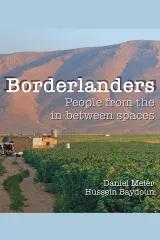Borderlanders
Daniel Meier and Hussein Baydoun, respectively political scientist and photojournalist, explored various borderland regions in the North, East and South of Lebanon. They met a large number of residents from different social origins, age, gender, sects and nationalities. Each of them explained how a border is not a simple phenomenon like a “line of sovereignty” but rather an entity that has an impact on those living nearby.
All of them, Lebanese as well as foreigners, underscored how they shape, use and transform this entity. There is a large range of different perceptions and trajectories, effects and actions, gains and losses that can be created by the borders depending on who you are and where you are located. While Lebanese citizens may face very different types of relationships to the border, several of their voices highlighted a social demand for the return of the state on the borders as a matter of security. This relates to the Syrian war and the subsequent journey of Syrian refugees seeking shelter. The latter brought to light harsh living conditions but also collaboration and support from Lebanese residents. Another ‘border effect’ stems from other foreigners or refugees, like the Palestinians: their trajectories revealed how blurred and mixed their identity became. Through these portraits, the border appears as a dotted line which is fragmented, cut, sometimes isolated but also ideologized. The border is a location that reveals concerns, tensions and shows what is at stake. It is telling of identity and belonging, probably a reason why such a place speaks to all of us.
